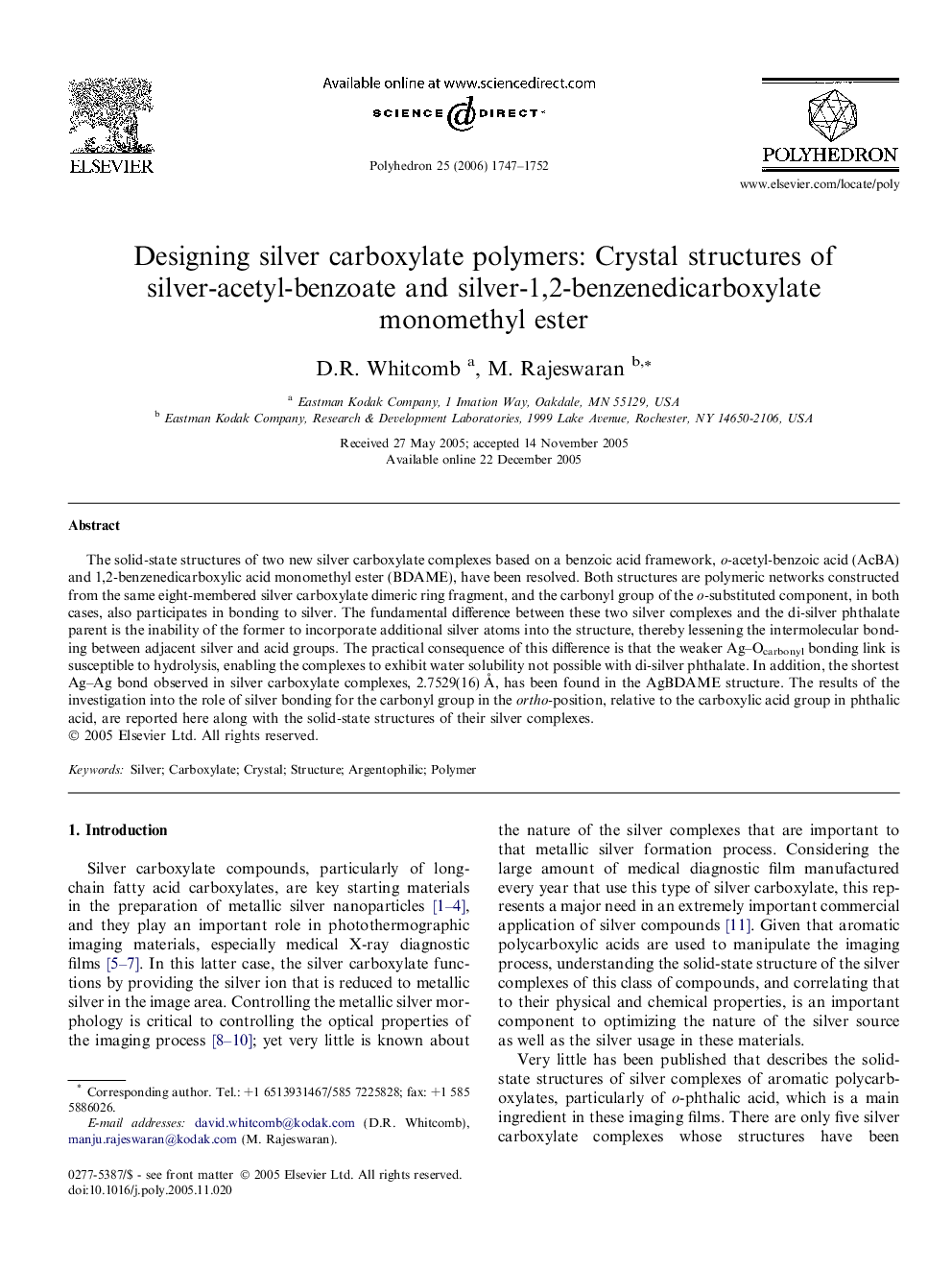| کد مقاله | کد نشریه | سال انتشار | مقاله انگلیسی | نسخه تمام متن |
|---|---|---|---|---|
| 1339199 | 979698 | 2006 | 6 صفحه PDF | دانلود رایگان |

The solid-state structures of two new silver carboxylate complexes based on a benzoic acid framework, o-acetyl-benzoic acid (AcBA) and 1,2-benzenedicarboxylic acid monomethyl ester (BDAME), have been resolved. Both structures are polymeric networks constructed from the same eight-membered silver carboxylate dimeric ring fragment, and the carbonyl group of the o-substituted component, in both cases, also participates in bonding to silver. The fundamental difference between these two silver complexes and the di-silver phthalate parent is the inability of the former to incorporate additional silver atoms into the structure, thereby lessening the intermolecular bonding between adjacent silver and acid groups. The practical consequence of this difference is that the weaker Ag–Ocarbonyl bonding link is susceptible to hydrolysis, enabling the complexes to exhibit water solubility not possible with di-silver phthalate. In addition, the shortest Ag–Ag bond observed in silver carboxylate complexes, 2.7529(16) Å, has been found in the AgBDAME structure. The results of the investigation into the role of silver bonding for the carbonyl group in the ortho-position, relative to the carboxylic acid group in phthalic acid, are reported here along with the solid-state structures of their silver complexes.
Manipulating the coordination ability of ortho di-carboxylate based ligand groups generates dramatically different solid-state structures. Simple conversion of an ester to a ketone transforms a simple stacked silver coordination polymer to a spiral structure. The former also contains the shortest Ag–Ag bond observed in silver carboxylate complexes, 2.7529(16) Å.Figure optionsDownload as PowerPoint slide
Journal: Polyhedron - Volume 25, Issue 8, 29 May 2006, Pages 1747–1752